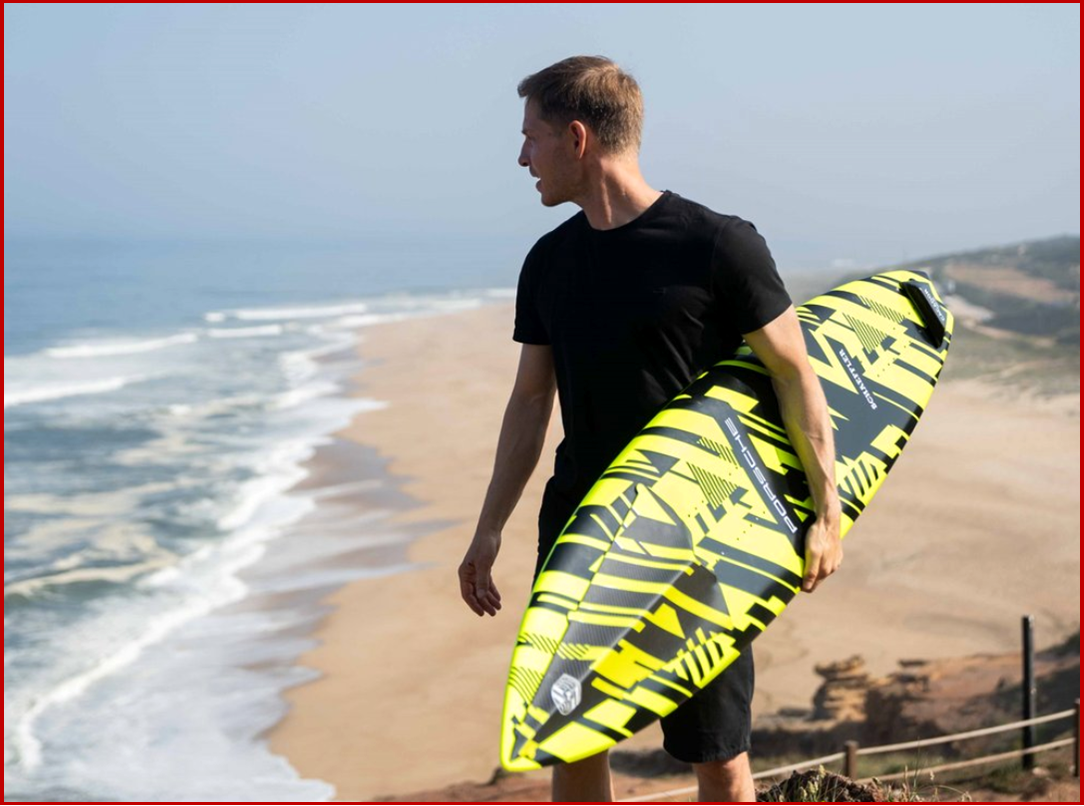Click for more data.
The goal of the collaboration was to translate experience from automotive development to surfing. Using the newest simulation methods and wind tunnel validation, the team improved the surfboard’s handling in the water (hydrodynamics) as well as the aerodynamics of both the board and the surfer – always with the goal in mind of reducing drag in both the water and the air. In theory this will allow Steudtner to reach higher speeds on the board – 70 to 80 km/h is currently possible. The higher speed is necessary to ride bigger waves – because the higher a wave is, the faster the surfer has to be to keep it from crashing over him. Aerodynamic testing in the Porsche wind tunnel also found other potential gains, such as adapting Sebastian’s body position while surfing to the new board also produce what is said to be significantly lower drag.
Using a measuring drone, in the future it will be possible to quickly and accurately measure the height of waves. At present, measurements are made using videos and still photographs. The current board prototype from Porsche Engineering is equipped with cameras, control and storage units, and sensors of the type used in vehicle development for modern driver assistance systems. The device measures all areas of the wave and the surfer in a 100-metre radius. The first reliable data is expected to be collected this autumn of this year, when the next big-wave season begins in Nazaré, Portugal. With his new surfboard, Steudtner can chase the next world record.


